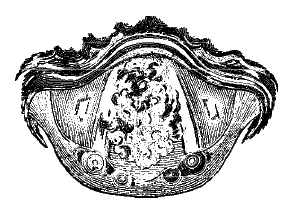
Myxoma of the larynx.
Morphart Creation/SHUTTERSTOCK.com
A group of panelists discussed the intricacies of laryngeal reconstruction after prior radiation and surgery during a session held at the Triological Society Sections Meeting. The speakers covered when to attempt surgery, when to avoid it, and special techniques to use, offering up a slate of expert guidance for these tough cases.
Explore This Issue
March 2016Panel moderator Peak Woo, MD, clinical professor of otolaryngology at Mount Sinai Hospital in New York City, said the challenge of laryngeal reconstruction lies in restoring both form and function to a complex structure. “If one restores only one, then one is lacking,” he said. “If one only restores the form, as in [a] good airway, then you have aphonia. If you only restore the function, as in vibration, then you have laryngeal stenosis.”
He harkened back to a 1985 description, which held that the “ideal method” would involve using tissue that is native to the area, highly viable, convenient for the surgeon, and expendable to the patient (Ann Otol Rhinol Laryngol. 1985;94:437-441).
A Light Touch
Edward Damrose, MD, associate professor of otolaryngology-head and neck surgery at Stanford University in Stanford, California, said that when it comes to late surgical rehabilitation after radiation and surgery, his philosophy is to understand and modulate factors that are unfavorable, to minimize long-term morbidity and preserve function, to be expedient when needed, as in the case of an airway compromise, and to preempt and prevent complications in the first place through the education of his colleagues. And, he added, it’s good to know “when to use a light touch versus an iron fist.”
For instance, in the case of Wegener’s vasculitis with subglottic stenosis, patience and a light touch work well. “Suppressing and resolving inflammation through autoimmune drugs and steroids is key. Our surgical goal at this time should be to maintain luminal patency while the inflammation is resolving,” said Dr. Damrose.
He emphasized that attempts to limit toxicity from radiation, whether with antibiotics, keratinocyte growth factors, the cytoprotective agent amifostine, or intensity-modulated radiation therapy, have not been very effective to date. Reduction in radiation dose is likely key, but until then surgery will probably be a necessity in the management of post-treatment complications. “All of these are generally applied to try to minimize these types of sequelae where we see this horrendous scarring process that results from mucositis,” he said. “And trying to prevent this from happening is a chief goal and a chief focus.” At his center, they are transitioning from cisplatin therapy to cetuximab, reducing radiation doses when possible, and switching to surgical procedures to lower radiation use. Ongoing Eastern Cooperative Oncology Group studies,